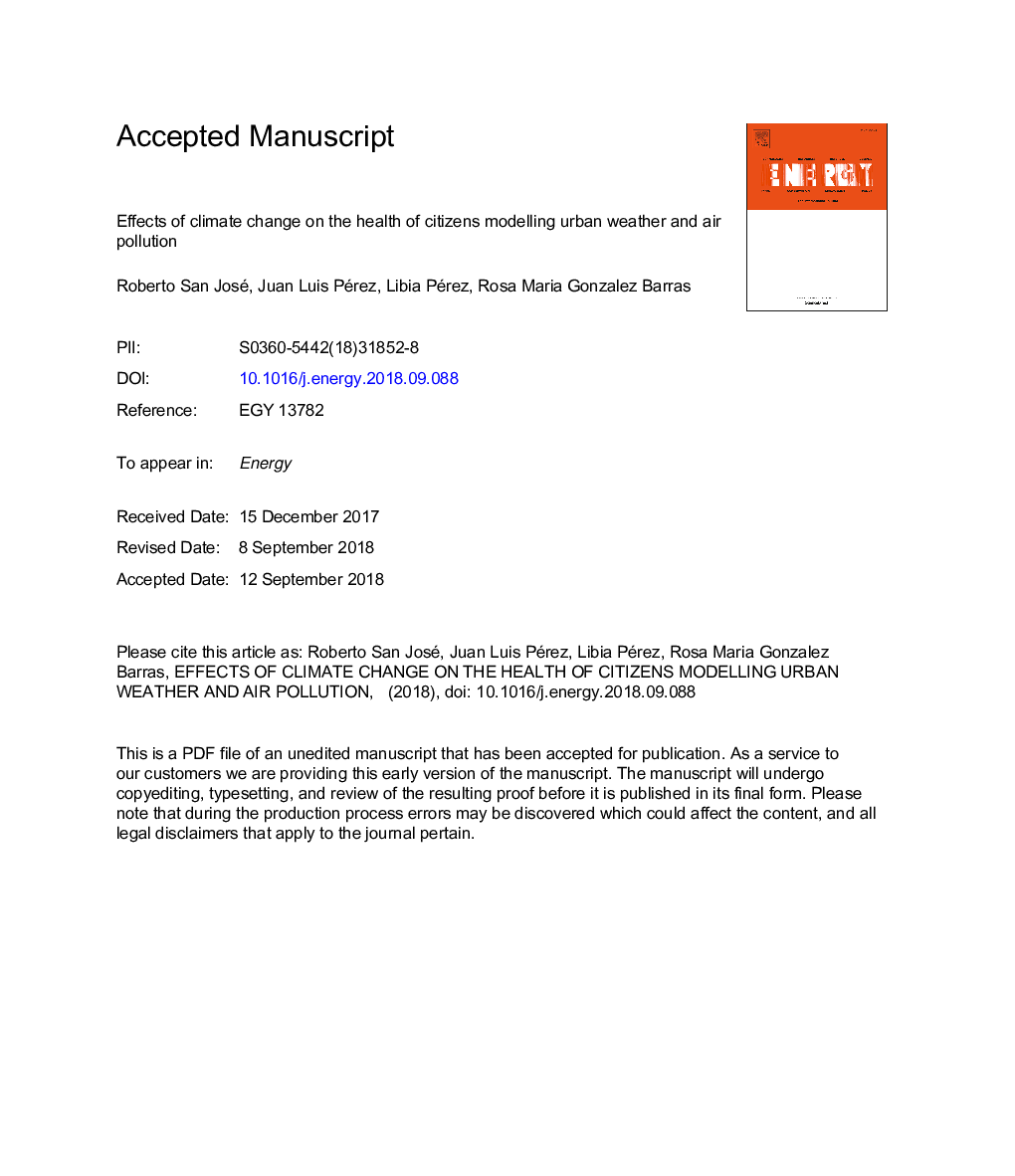| Article ID | Journal | Published Year | Pages | File Type |
|---|---|---|---|---|
| 10156252 | Energy | 2018 | 23 Pages |
Abstract
A dynamical downscaling tool has been implemented to understand the impacts of global climate on citizens health. We have used the WRF-Chem mesoscale model (NOAA, USA) to produce information covering Europe with 25â¯km of spatial resolution and two nested domains with 5â¯km and 1â¯km of spatial resolution over London. Finally, detailed simulations are carried out using the MICROSYS-CFD model to take into account the effects of urban buildings on the urban atmosphere in the Kensington and Chelsea area. The tool produces very high spatial air quality and meteorological data (50â¯m) and also temporal resolution (1â¯h) to estimate health impacts in the short term, using exposure-response functions extracted from epidemiological studies. The comparison shows an acceptable agreement of the modelled data with the measurements. The effects on the health of citizens by temperature change in the future are more important than by changes in atmospheric pollutant concentrations. The maps show how the effects depend on the city's geometry and how the tool can highlight the most vulnerable areas to help to design plans and implement strategic measures to mitigate the effects of global climate change on people's health.
Keywords
Related Topics
Physical Sciences and Engineering
Energy
Energy (General)
Authors
Roberto San José, Juan Luis Pérez, Libia Pérez, Rosa Maria Gonzalez Barras,
